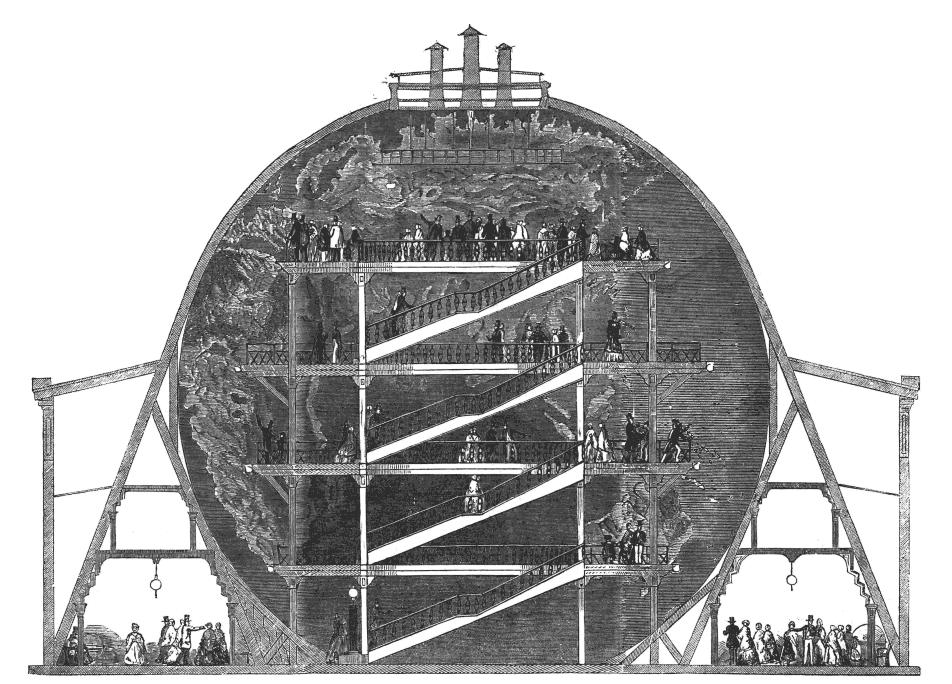
1 minute read
Russian Cosmism in art and science
Wyld’s Great Globe, an attraction situated in London’s Leicester Square between 1851 and 1862, based on Nikolai Fedorov’s image of Earth as a spaceship 10 Trevor Paglen, ‘Fedorov’s Geographies of Time’, E-Flux , 88, 2018 <https://www.e-flux. com/journal/88/173480/fedorov-s-geographies-of-time/> [accessed 10 December 2020]. 11 Anton Vidokle and Hito Steyerl, ‘Cosmic Catwalk and the Production of Time’, E-Flux , 82, May2017 <https://www.e-flux.com/journal/82/134989/cosmic-catwalk-and-theproduction-of-time/> [accessed 16 December 2020]. 12 George M. Young, ‘Esoteric Elements In Russian Cosmism’, The Rose+Croix Journal , Rose+Croix
Revisited in depth over the last two decades, the Russian Cosmist worldview not only collapses the distinction between human and nature but also that between the past, the present and the future. As articulated by Nikolai Fedorov at the end of the 19th century, the common task of humanity is to overcome alienation and restore a sense of kinship across species. The two great Fedorovian projects - the geoengineering of the Earth and resurrection of all those who have ever lived and implicitly the extension of life are meant to abolish this alienation on both a spatial and a temporal axis.10 As noted by Anton Vidokle, ‘Fedorov’s conviction was that nobody can be left behind in death, not even the monsters, because a universal project of this nature cannot be curated selectively, and present generations do not have the right to be such a curator. It’s either everybody or nobody’11. Yet the ethical questions around the resurrection of those who have left a negative mark on our history prove rather difficult when taken into consideration.
Advertisement
Although upon first glance, these theories might appear bizarre, the influence of Cosmism in Russian medicine, science and culture has been wide-reaching over the last century. Contemporary cosmism scholar and philosopher Svetlana Semenova argues for the relevance of this thought which calls for rational human regulation of the environment.12










